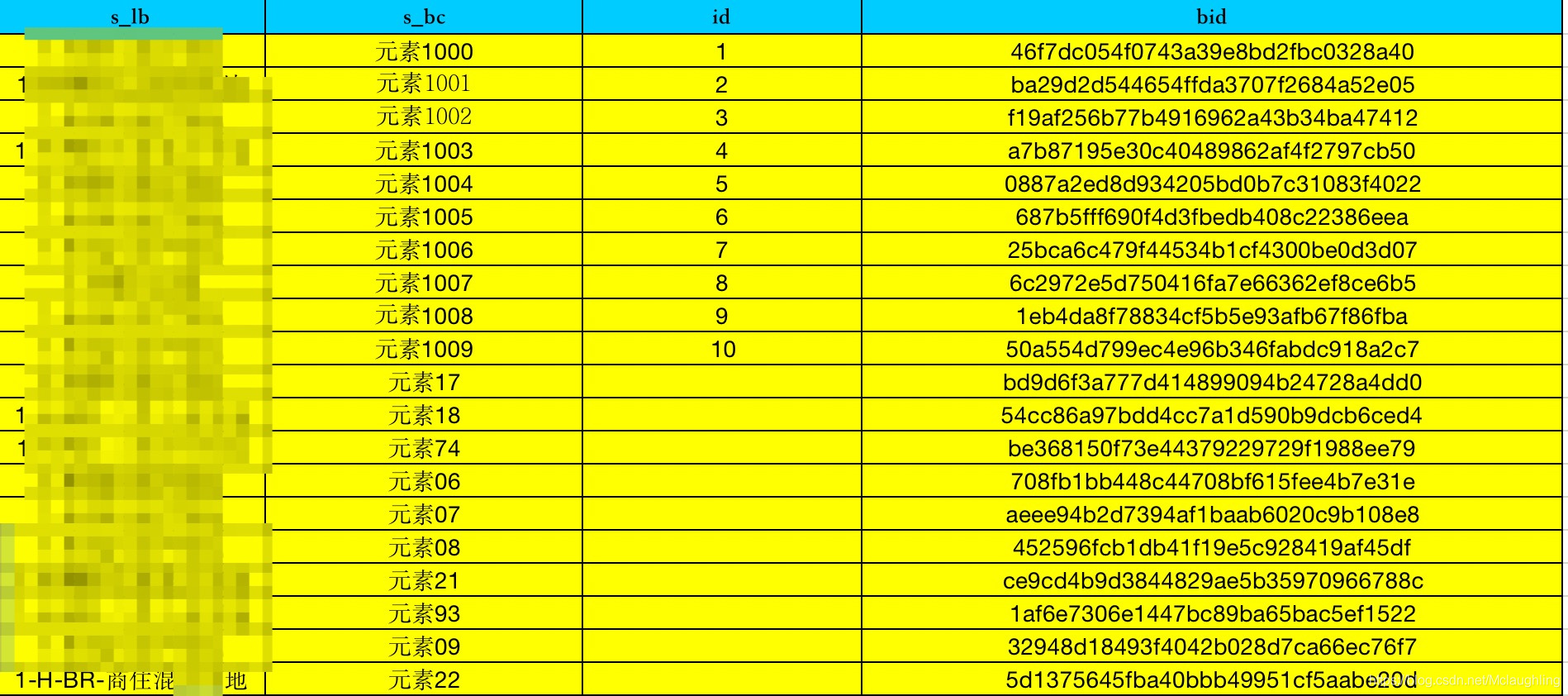喜欢的点赞👍 不喜欢的解散 创作不易记得三连
开整
1 导入依赖
<!--导出数据-->
<dependency>
<groupId>com.alibaba</groupId>
<artifactId>easyexcel</artifactId>
<version>2.1.3</version>
</dependency>
2.导入监听器
@Slf4j
public class NoModelDataListener extends AnalysisEventListener<Map<Integer, String>> {
private static final Logger LOGGER = LoggerFactory.getLogger(NoModelDataListener.class);
private IStandingBookMangerService iStandingBookMangerService;
private String tabaleName;
public NoModelDataListener(IStandingBookMangerService iStandingBookMangerService,String tabaleName) {
this.iStandingBookMangerService = iStandingBookMangerService;
this.tabaleName = tabaleName;
}
/**
* 每隔5条存储数据库,实际使用中可以3000条,然后清理list ,方便内存回收
*/
private static final int BATCH_COUNT = 300;
List<Map<String, Object>> addList = new ArrayList<>();
List<Map<String, Object>> updateList = new ArrayList<>();
/**
* 存储Key
*/
Map<Integer, String> key = new HashMap<>();
/**
* keuList
*/
List<String> keyList=new ArrayList<>();
/**
* 重写invokeHeadMap方法,获去表头,如果有需要获取第一行表头就重写这个方法,不需要则不需要重写
*
* @param headMap Excel每行解析的数据为Map<Integer, String>类型,Integer是Excel的列索引,String为Excel的单元格值
* @param context context能获取一些东西,比如context.readRowHolder().getRowIndex()为Excel的行索引,表头的行索引为0,0之后的都解析成数据
*/
@Override
public void invokeHeadMap(Map<Integer, String> headMap, AnalysisContext context) {
LOGGER.info("解析到一条头数据:{}, currentRowHolder: {}", headMap.toString(), context.readRowHolder().getRowIndex());
Set<Integer> integerSet = headMap.keySet();
for (Integer integer : integerSet) {
keyList.add(headMap.get(integer));
}
key.putAll(headMap);
}
/**
* 读取数据 筛选过滤数据 赛选出那些数据是添加 那些数据是修改
* @param data 传入数据
* @param context 读取数据
*/
@Override
public void invoke(Map<Integer, String> data, AnalysisContext context) {
LOGGER.info("解析到一条数据:{}", JSON.toJSONString(data));
HashMap<String, Object> objectObjectHashMap = new HashMap<>(16);
Set<Integer> integerSet = data.keySet();
String id=null;
for (Integer integer : integerSet) {
String s = key.get(integer);
if("id".equals(s)){
id = data.get(integer);
if (StringUtils.isNotBlank(id)) {
Double f = Double.valueOf(id);
Integer a = (int)Math.ceil(f);
objectObjectHashMap.put(s,a);
}else {
objectObjectHashMap.put(s,null);
}
}else{
objectObjectHashMap.put(s,data.get(integer));
}
}
if (StringUtils.isBlank(id)) {
addList.add(objectObjectHashMap);
} else {
updateList.add(objectObjectHashMap);
}
// 分批次 插入数据库 可以使用 暂时不适用 使用的 可以开启
//list.add(data);
// if (list.size() >= BATCH_COUNT) {
// saveData();
// list.clear();
// }
}
/**
* 读取完成后 保存数据
* @param context
*/
@Override
public void doAfterAllAnalysed(AnalysisContext context) {
saveData();
LOGGER.info("所有数据解析完成!");
}
/**
* 加上存储数据库 添加 以及更新
*/
private void saveData() {
LOGGER.info("{}条数据,开始存储数据库!", addList.size());
iStandingBookMangerService.addStandingBookBatch(addList,tabaleName,keyList);
iStandingBookMangerService.updateStandingBookBatch(updateList,tabaleName);
LOGGER.info("存储数据库成功!");
}
public List<Map<Integer, String>> getDatas() {
return null;
}
public void setDatas(List<Map<Integer, String>> datas) {
//this.list = datas;
}
}
3.测试数据
/**
* 导入数据
*
* @throws Exception
*/
@GetMapping(value = "/importData")
@ApiOperation(value = "导入数据", notes = "导入数据")
public ApiResponse importData(MultipartFile file,@RequestParam String tableName) throws Exception {
ApiResponse apiResponse = new ApiResponse();
ApiResponse res = new ApiResponse();
//获取文件名
String fileName = file.getOriginalFilename();
//获取文件的后缀名为xlsx
String fileXlsx = fileName.substring(fileName.length() - 5);
String fileXls = fileName.substring(fileName.length() - 4);
//如果不是excel文件
if (!(fileXlsx.equals(".xlsx") || fileXls.equals(".xls"))) {
res.setErrorCode(400);
res.setErrorMsg("文件格式错误");
return res;
}
//初始化监听器
NoModelDataListener noModelDataListener = new NoModelDataListener(iStandingBookMangerService, tableName);
Map<String,Object> result = new HashMap<>();
//解析数据
List<Object> list = EasyExcel.read(file.getInputStream(),noModelDataListener).sheet(0).doReadSync();
result.put("list", list);
apiResponse.setErrorCode(200);
return apiResponse;
}
4.测试数据表

5 postman测试

7.mapper 如何解析
map 传过来的数据 mybatis 的 mapper.xml 如何解析 参考我的另外一篇博文
https://blog.youkuaiyun.com/Mclaughling/article/details/110137985
8.总结
后面有空在总结
























 915
915

 被折叠的 条评论
为什么被折叠?
被折叠的 条评论
为什么被折叠?








